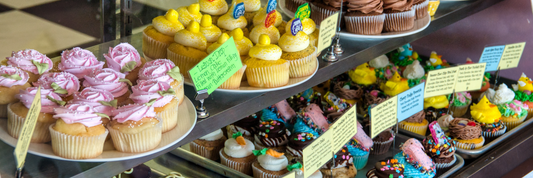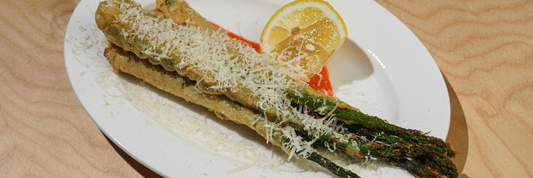Describing coffee taste goes beyond just saying "it’s good" or "it’s strong." It’s a structured process of engaging your senses to identify and articulate the unique characteristics of the coffee you’re drinking. Here's a detailed explanation of how to analyze and describe coffee taste effectively:
1. Prepare the Coffee for Tasting
Proper preparation is crucial for accurate analysis. Consistency and cleanliness ensure that you’re tasting the coffee itself, not external factors.
Steps to Prepare Coffee
- Use Fresh Coffee Beans: Grind your coffee just before brewing for maximum freshness.
- Choose a Standardized Brew Method: Methods like pour-over, French press, or cupping provide consistent results.
- Control the Variables: Use clean equipment, filtered water, and a reliable coffee-to-water ratio.
- Let it Cool Slightly: Tasting coffee at a moderate temperature allows the flavors to shine without being masked by heat.

2. Engage Your Senses
Coffee tasting is a multi-sensory experience. Each sense contributes to a complete understanding of the coffee’s profile.
Visual Observation (Appearance)
Look at the coffee’s clarity and color.
- Clarity: Does the coffee appear clear or cloudy? Clear coffee often reflects proper brewing.
- Color: A dark brew might suggest a bold roast, while a lighter color might indicate a delicate roast.
Aroma (Smell)
Smelling coffee provides the first impression of its flavor profile.
- Dry Aroma: Smell the coffee grounds before brewing. Are they nutty, fruity, or earthy?
- Wet Aroma: Smell the brewed coffee. This often reveals additional layers like floral or caramel notes.
Taste (Flavor)
Take a small sip, allowing the coffee to coat your palate. Focus on these aspects:
- Acidity: Does it feel bright and tangy, like citrus?
- Sweetness: Is there a natural sweetness, like honey or chocolate?
- Bitterness: Is it pleasant and mild, or harsh and overwhelming?
- Saltiness: A subtle saltiness can balance the flavor.
How to Taste Coffee: A Guide to Understanding Coffee's Complex Flavors
Touch (Body):
Focus on how the coffee feels in your mouth:
- Light-bodied: Crisp and refreshing, like tea.
- Medium-bodied: Smooth and balanced.
- Full-bodied: Rich and creamy, with a lingering texture.
Aftertaste
Evaluate the flavors that linger after swallowing:Is it clean and short-lived, or complex and enduring?
Common aftertaste notes include chocolate, spice, or nuttiness.3. Break Down the Coffee’s Flavor Profile
Acidity
Describes the sharpness or brightness of coffee. It’s not about sourness but a lively sensation.
Examples: Lemon-like in Ethiopian coffee, apple-like in Colombian beans.
What is Coffee Acidity? Factors Affecting Coffee Acidity
Sweetness
Reflects the natural sugars in coffee. Higher-quality beans often exhibit more sweetness.
Examples: Honey, caramel, or ripe fruit.Bitterness
A natural characteristic influenced by the roast level. Bitterness should balance acidity and sweetness without overpowering them.
Examples: Dark chocolate or cocoa.Aroma
The scent contributes to the perceived flavor, influencing your experience before you even sip.
Examples: Floral in Ethiopian Yirgacheffe, nutty in Brazilian Cerrado.
Body
The texture or weight of the coffee on your tongue.
Light-bodied coffees feel thin and delicate, while full-bodied ones feel thick and velvety.4. Use a Structured Approach: The Coffee Tasting Wheel
- Start by identifying broad categories, such as fruity, nutty, or earthy.
- Move to specific descriptors like "citrus" under fruity, then "lemon" or "orange."
- Practice frequently to develop a detailed and accurate flavor vocabulary.

5. Record Your Observations
To improve your ability to analyze and describe coffee, take detailed notes after each tasting session. Include the following:
- Coffee Origin: Where is the coffee from?
- Roast Level: Light, medium, or dark?
- Brew Method: How was it prepared?
- Flavor Notes: Specific descriptors for acidity, sweetness, bitterness, body, and aftertaste.
- Overall Impression: A summary of your experience.
6. Practice Regularly to Refine Your Palate
The more coffee you taste, the better you’ll become at identifying subtle differences. Here are a few tips to enhance your tasting skills:
- Taste Coffee in Groups: Comparing coffees side by side highlights their unique characteristics.
- Expand Your Sensory Experience: Try tasting fruits, spices, and other foods to build a reference library for flavors.
- Cupping Sessions: Participate in cupping sessions with professionals or friends to learn from others’ perspectives.
7. Describe Coffee Using Clear and Concise Language
Avoid overly vague terms like “good” or “strong.” Instead, use specific, relatable descriptors that paint a vivid picture of the coffee’s profile. For example:
- Instead of: "This coffee is strong."
- Say: "This coffee has a bold, full-bodied profile with notes of dark chocolate and a long, spicy aftertaste."
Conclusion
Analyzing and describing coffee taste is both an art and a science. By engaging your senses, following a systematic approach, and practicing regularly, you can refine your ability to identify and articulate coffee’s complex flavors. Whether for personal enjoyment or professional growth, mastering coffee tasting unlocks a deeper appreciation for every cup you savor.




